We stumbled on Saracinesco quite by chance. We were walking with friends in the Appennini mounts, just fifty kilometres east of Rome, heading to Mount Costasole. While Costasole itself proved to be of relatively little interest, it does stand in a beautiful landscape. We’d decided to start from the tiny town of Saracinesco. With its 200 inhabitants, it is the smallest municipality in the Lazio region.
Saracinesco proved so picturesque that it warranted further exploration and investigation.
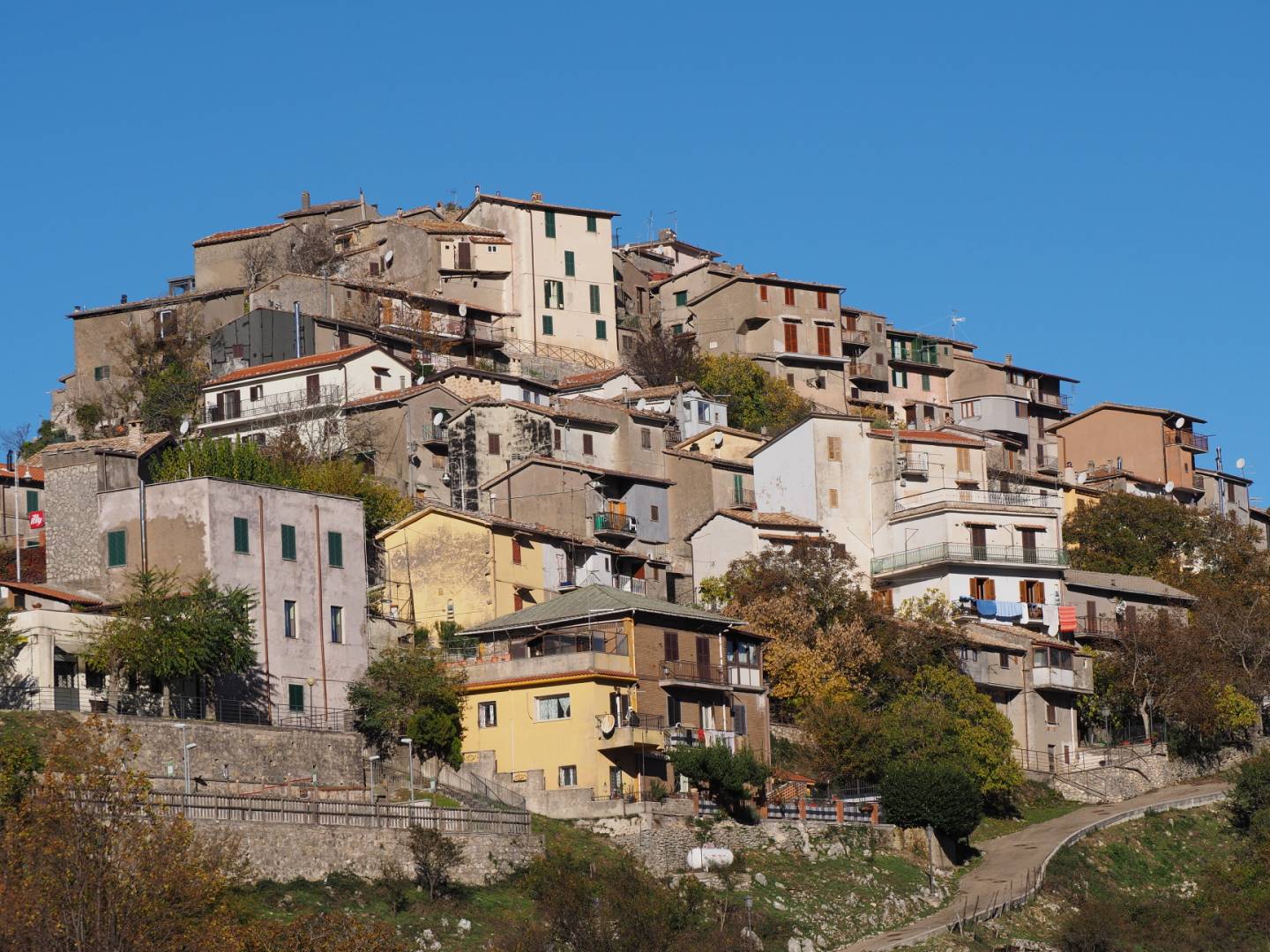
We took a short tour of the village early in the morning while looking for a coffee, which we could not get because the only bar was closed. We found an interesting stele in a public garden on the very top of the village, telling a fragment of its story.
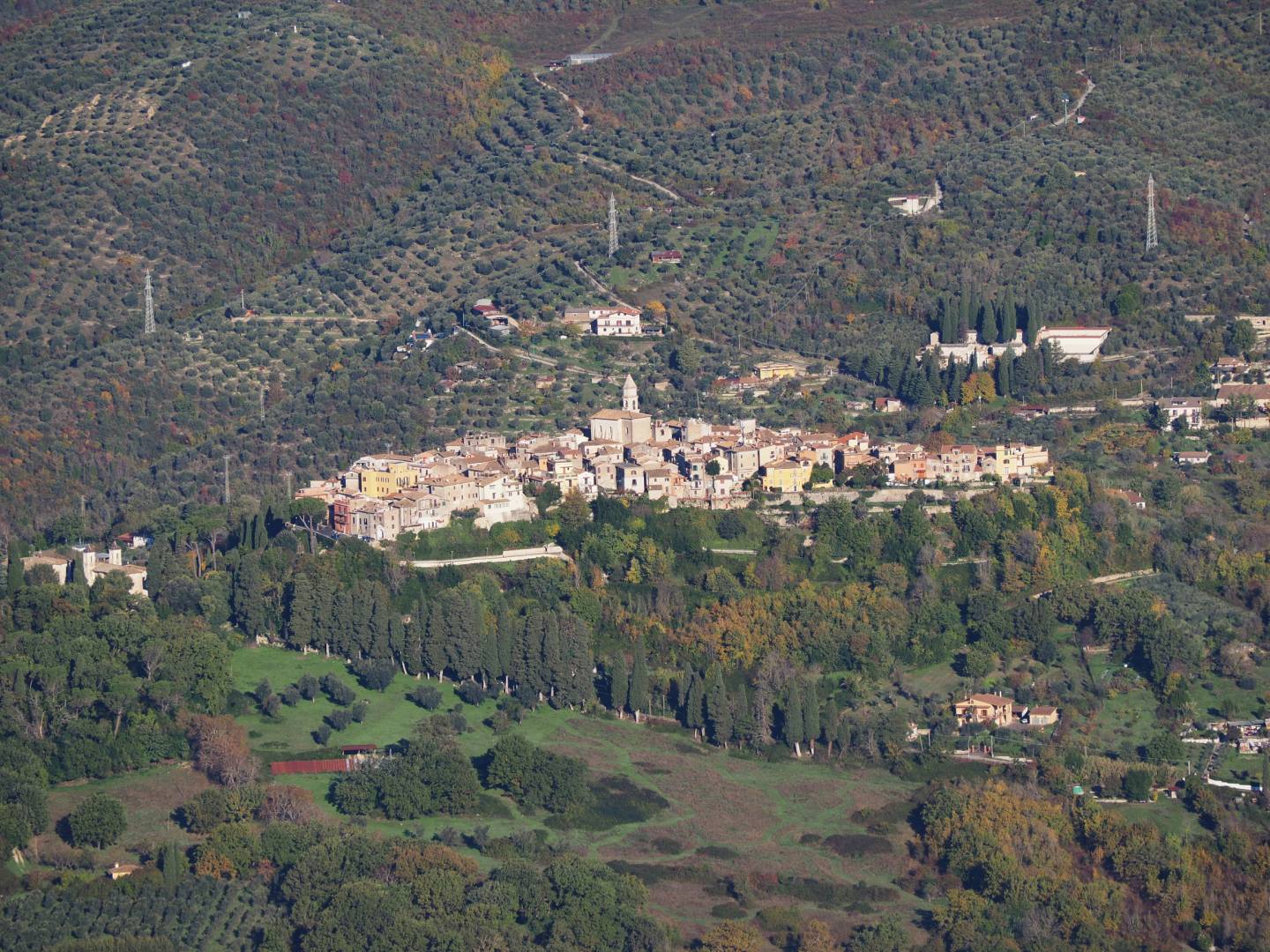
The stele bears a turbaned head and a script proclaiming that the community remembers and honours its Arab founders and fathers and that this origin lays “a symbolic thread between the opposite sides of the same sea”. This was more than enough to arouse our curiosity. So, back in Rome, we carried out an internet search on the origins of Saracinesco.
We soon discovered that the village was founded in the tenth century, allegedly by a Saracen pirate group (whence its name) who survived the obscure battle of San Cosimato in 916. Saracen and Arab pirates, arriving on galleys either from North Africa or the Levant, often ravaged the Italian coasts and could push quite far inland.
They could even establish short-lived settlements there. However, the further they went inland, the higher the risks, and in 916 an army of the Holy Roman Empire, the heirs of Charlemagne, moved from Rome and caught a group of Saracen pirates in the plain of San Cosimato. The plain also lies some 50km from Rome, between the via Tiburtina and a gorge of the Aniene river.
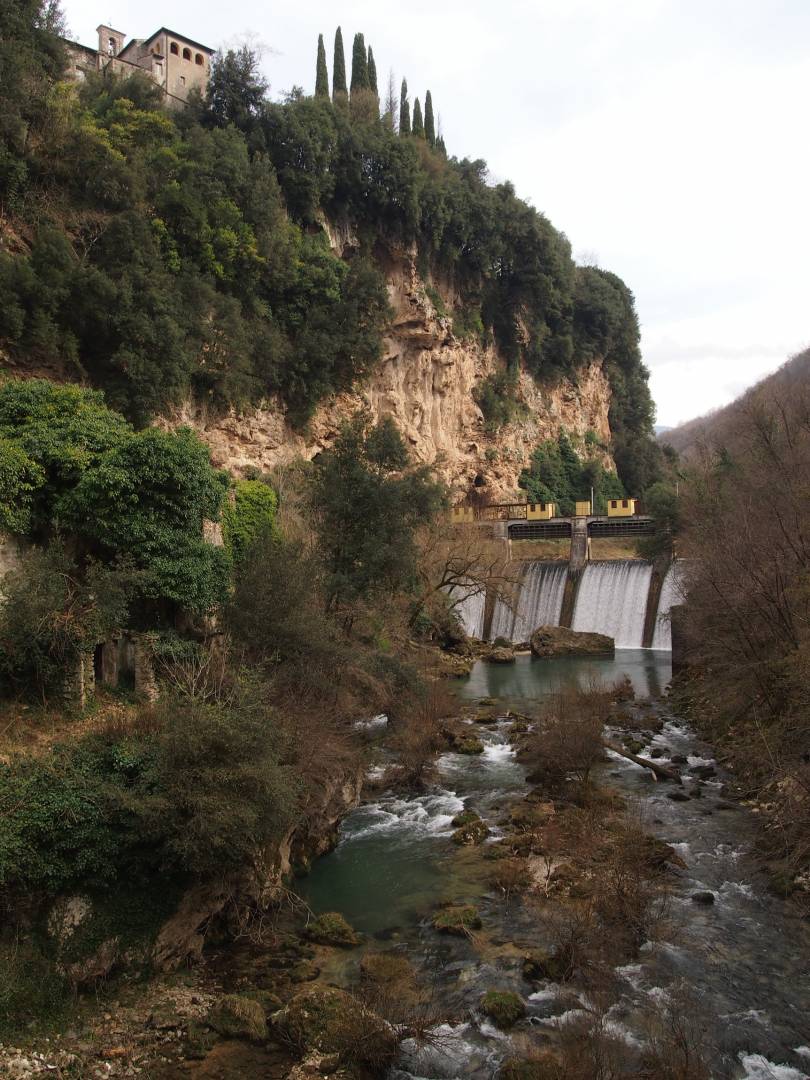
On the very border of the plain lies the monastery of San Cosimato that was then just a small church. The pirates were defeated and slain, but a small group succeeded in crossing the river and moving a few kilometres to the south, climbing a steep hill (900m above sea level) and settling there.
The siege of this encampment would probably have cost more than it was worth, so Pope Giovanni X granted them the right to stay, under a peace agreement.
With time, the pirates’ descendants mingled with the local population and were converted to the peaceful existence of peasants, cattle herders, and farmers. However, the name of the village remains Saracinesco to this day, being by origin an adjective.
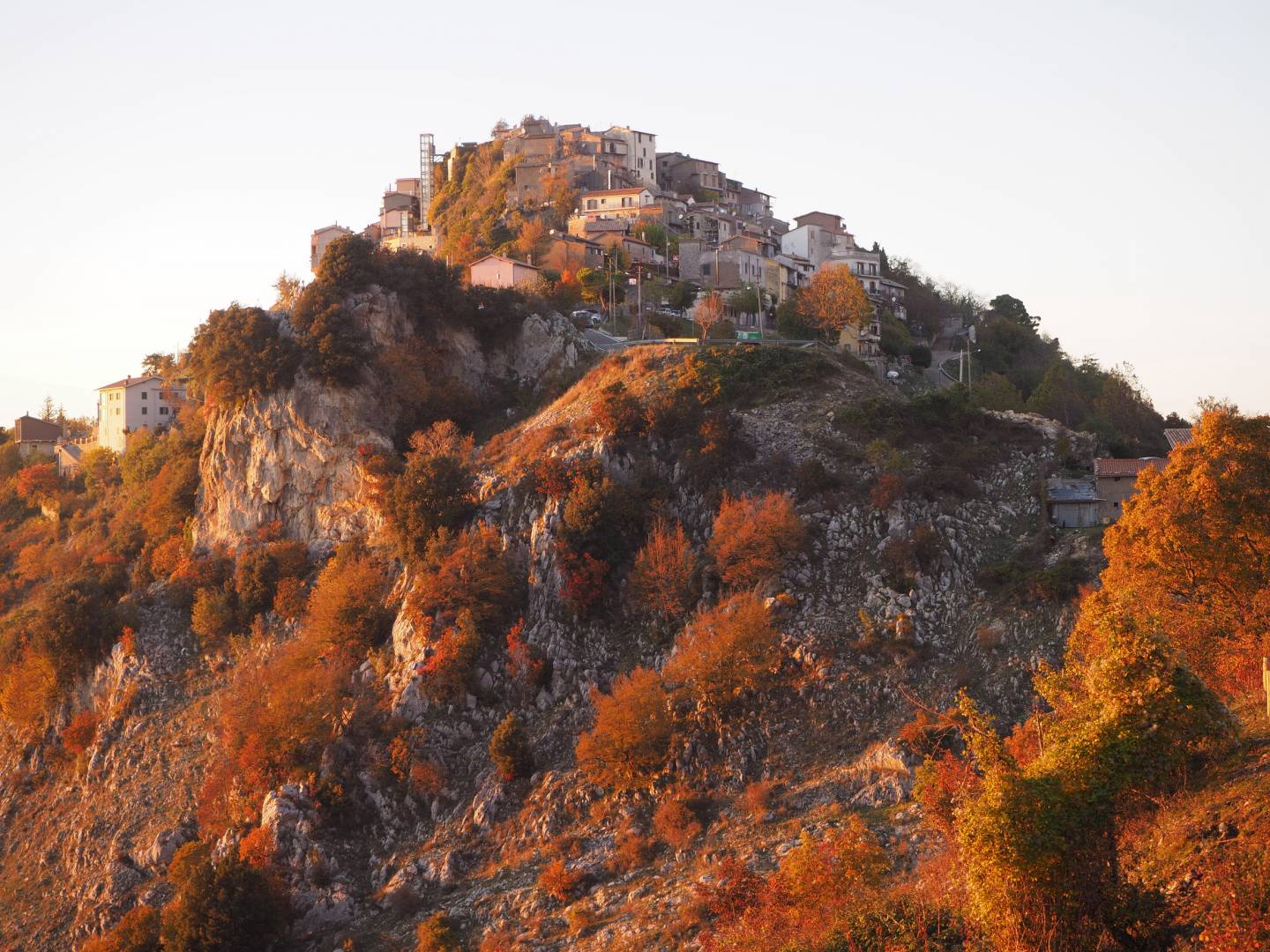
The village’s natural position clearly explains why its siege was not pursued and, even today, it lies at the end of a steep blind road; all other sides can be accessed only by following footpaths (as we did on our way to mount Costasole and back). It sits significantly higher than the neighbouring villages.
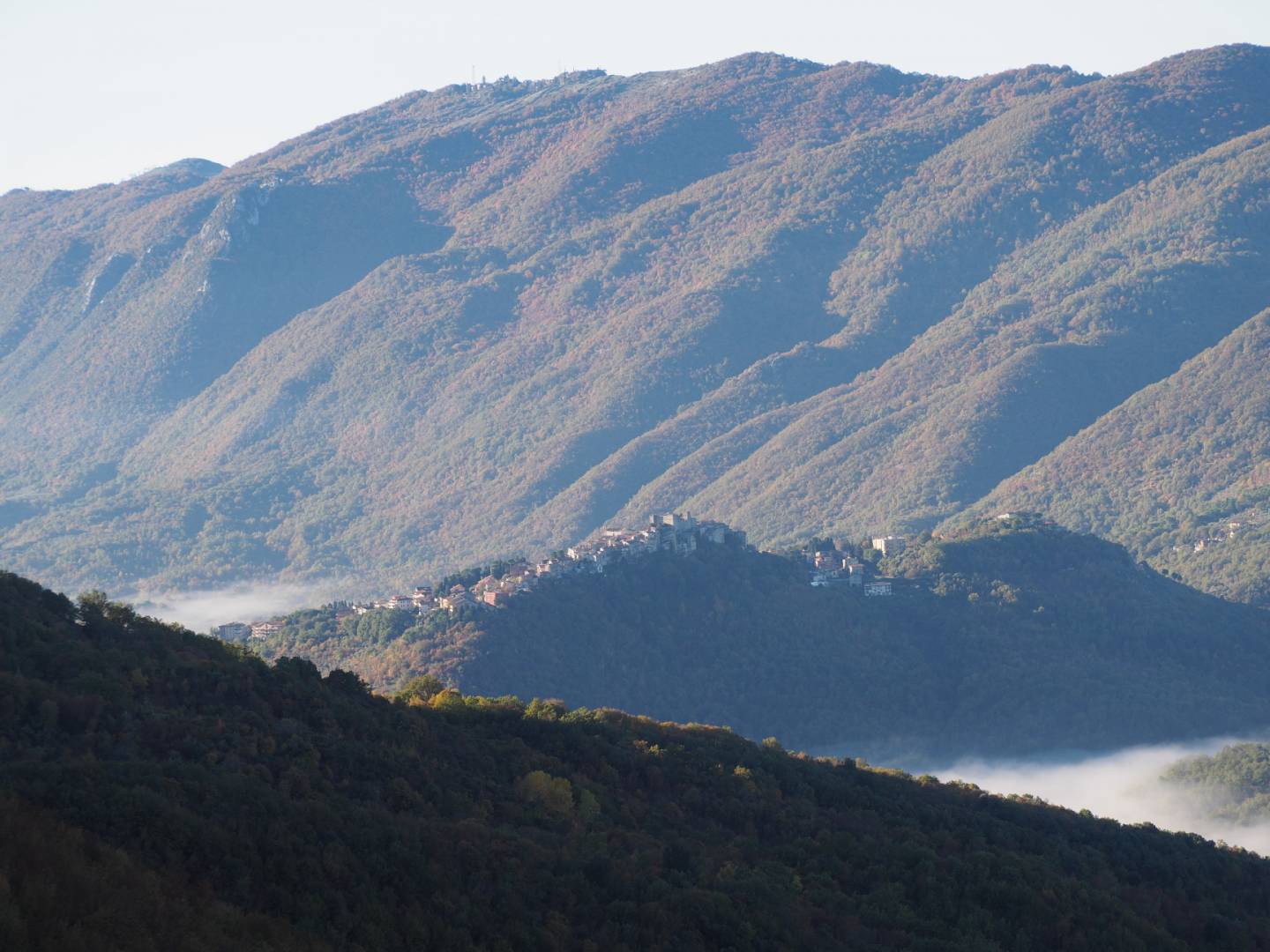
The internal passageways are more often stairways rather than streets. During the thirteenth century, a castle was built above the village, of which the external walls remain and now enclose the public garden where the stele described above is located.
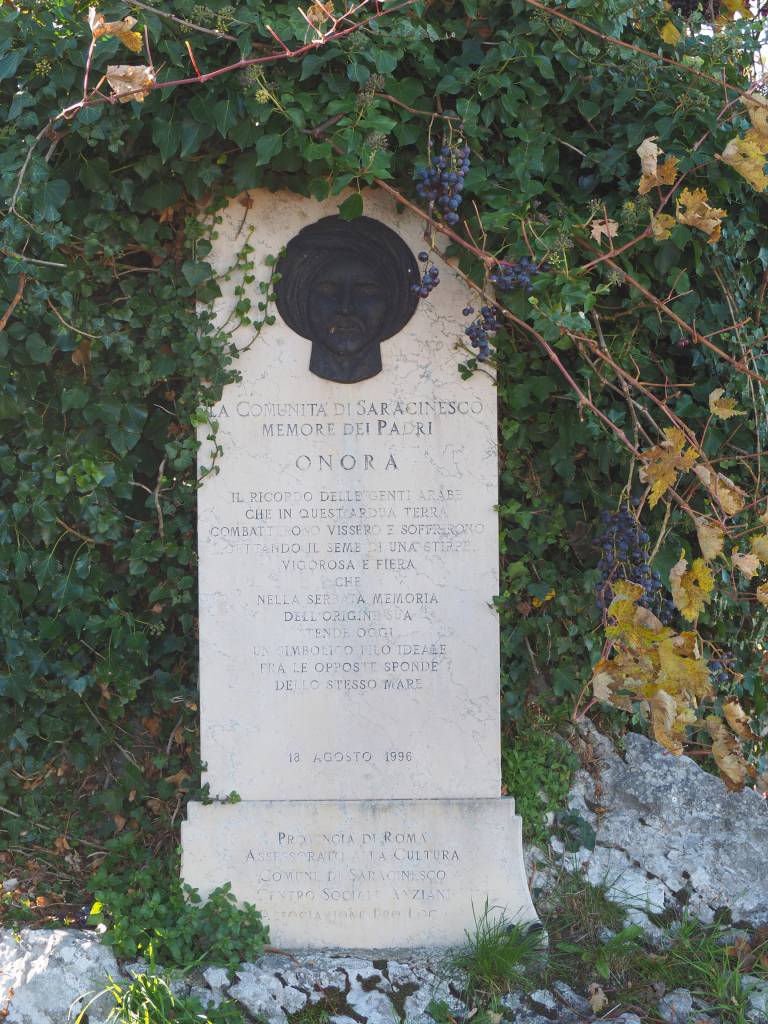
With its village, the castle was bought and sold between Roman noble families until, at the end of the sixteenth century, it became the Pope’s property.
Saracinesco deserves a much more thorough exploration than we were able to accomplish, but our goal of the day was the mountain. The village tells a story of integration. We have here in Italy, German, French, Ladin, Greek and Albanian speaking communities, together with the remnants of Arabic communities. However, as far as I know, Arabic is no longer spoken in any community.

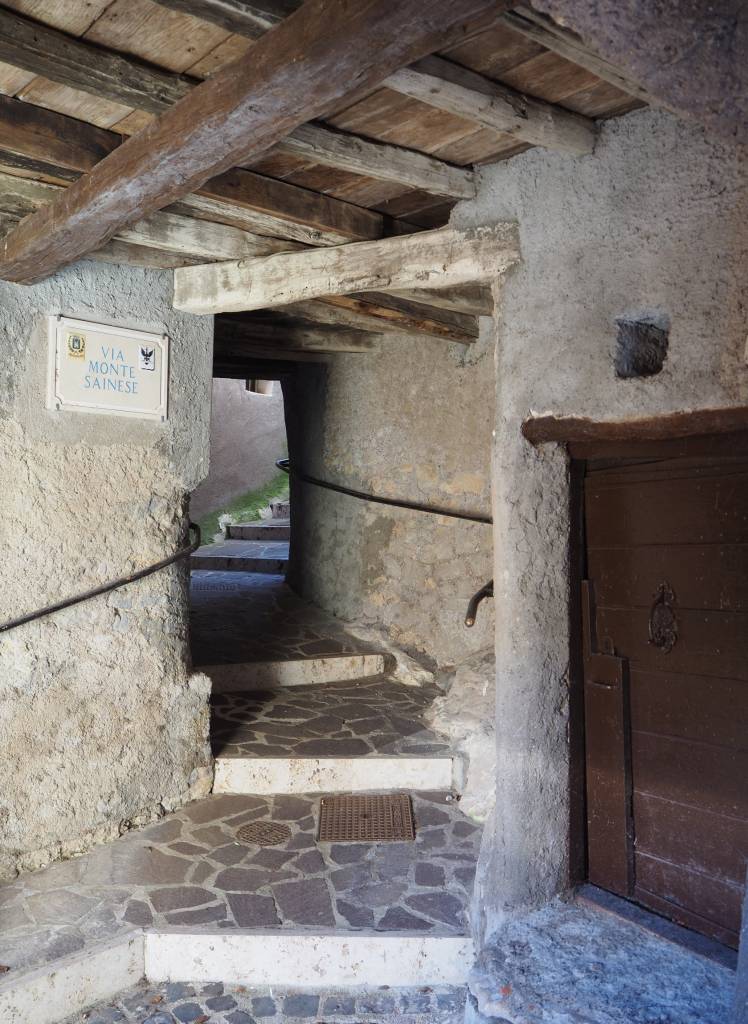
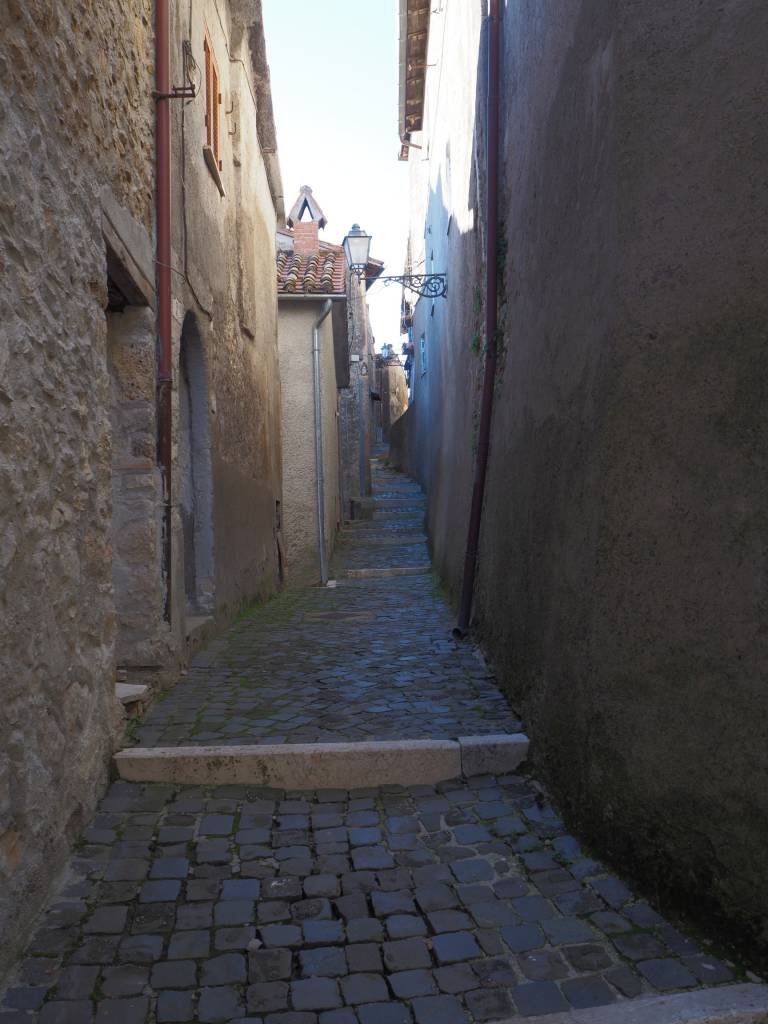
I should add that I shoot the Omd using the electronic shutter mode, to avoid shutter shock, while I do not have this feature on the E-pm1, which sometimes produces blurred images.
Thank you, Dave for your appreciation. The camera was an Olympus Omd em10 ii for all pictures except that of the Aniene river and San Cosimato monastery which was taken in another excursion with an Olympus E-pm1. I added it to the series because it made logical sense. The lenses were the 14-42 mm and 40-150 mm.
Andrea,
This is a wonderfully descriptive article, about what feels like a unique piece of history. The images set a scene of which I would love to see more.
I would ask, what camera where the images taken on, as there is some cracking looking ones amongst them.
Best
Dave
A very enjoyable article Andrea, thanks. I particularly liked the photo of the via which as you write is more a stairway than a street. My bedtime reading currently comprises two books, Venice by Jan Morris and Inspector Montebalno stories from Sicily so your piece last night fitted in nicely geographically.
Thank you, Kevin! I shall not comment on your appreciation for Italy as Italians are extremely partial to their land (in the town of Bari the locals used to say that if Paris were on the seaside it would be like a little Bari), but both Venice and Sicily are beautiful!
Lovely story and photos, Andrea. The Arabs were also in Spain where they brought out a lot of their culture and scientific knowledge to Europe until they were kicked out by Ferdinand and Isabella. Spain still owns some small enclaves on the North African coast to this day, something most people are not aware of. There are also Arabic influences in Malta where the local language maintains both Italian and Arabic influences. There are stories about Arabic pirates capturing people on the South Coast of Ireland, but I have never been able to determine they were real or fictional.
The past interactions between Europe and Africa/Asia in the Mediterranean really need to be much better known. Thanks for the lovely article, Andrea.
William
Thank you William. Indeed we are indebted to the Arabic culture (as they are indebted to ours). What I found specially noteworthy of this village is how strong the appreciation of their heritage is, at a time when the Islam is often depicted as the enemy of Europe.
Thank you Andrea for this interesting piece of history. I had the chance to visit the very beautiful Amalfi Coast in Italy back in 2015. There were magnificent sceneries along the coastal road above the cliff line. I stopped by Positano for lunch and just fell in love with the area. A warm climate with lots of olive trees, a very ideal place for retirement to me 🙂 Even though I live in the US, I am also an EU citizen so retiring in Europe is definitely one of my options. Of course with the crazy geopolitics these days, it is hard to predict what Europe or even the world will be like by the time I retire but I will keep my fingers crossed! Please take care and looking forward to more articles from you.
Yours Truly,
Patrick
Thank you Patrick, and if you will retire to Italy, get in touch!
Dear John, I don’t think this village (or the area as a whole) is in the group you say: buying a house or flat in this area is relatively expensive. The areas you say (look for?) are usually far from major cities. In the interior of Umbria, Tuscany and Marche you find these deals, however I don’t know the details of the agreements. Surely you pay very little, but you are bound to maintain the house in its state and this may be expensive. This is done in order to preserve the appearance of our cityscapes.
Andrea
Really enjoyed this but I have to ask. Is this one of those villages that I read about in LOCAL IT, that the people left in these towns are offering amazing deals to buy one of their properties , thn come fix it up start business, stay five years and home is yours. One would think with all these businesses encouraging people work remote, so you don’t have to worry COVID, and business doesn’t have to pay big bucks for Corp office elsewhere, that maybe this could revitalize these towns if the state or federal govt came in and said free wifi internet from here, and they pick up the costs? Thanks again for sharing your history
Excellent article and images Andrea. I truly enjoy the way you document each of your articles. It is always a pleasure to read. Thanks for sharing.
Jean
Thank you, Jean. It is such a pleasure to be a member of the macfilos community and to exchange views with you all!
Andrea
Thank you for writing such a delightful article: history and photographs all in one. Just like you, my wife and I in Italy have also found, when you fancy a coffee in a small village the bar is closed.
Chris
Thank you Chris! Indeed some of these villages are so small that everyone knows everyone else, and when some of the villagers want to drink a coffee (or more often a glass of wine) and to play a round of cards they go to the house of the bar’s owner and ask him to open. If nobody asks the bar stays closed, especially in winter. Hope you will be luckier next time.
Andrea